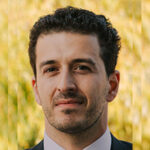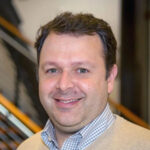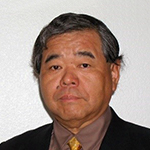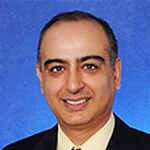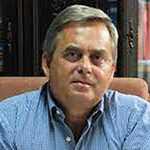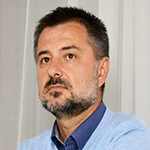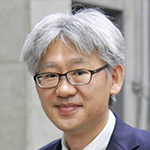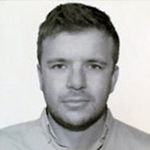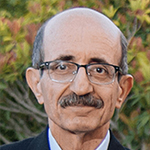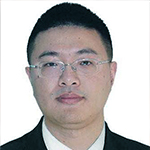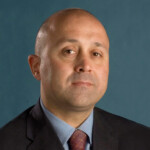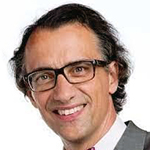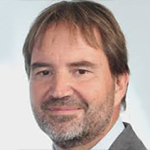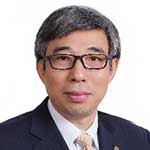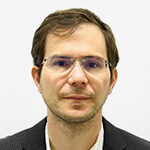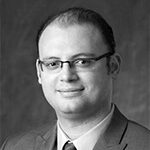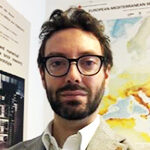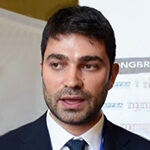MS 01 – Component Reuse in Structures and Infrastructures
Ornella Iuorio
University of Leeds
Leeds, UK
Corentin Fivet
Ecole Polytechnique Fédérale de Lausanne
(EPFL)
Fribourg, Switzerland
MS 02 – Smart Condition Assessment of Railway Bridges
Túlio Bittencourt
Universidade de São Paulo
São Paulo, Brazil
Rui Calçada
Universidade do Porto
Porto, Portugal
Diogo Ribeiro
Instituto Superior de Engenharia do Porto
Porto, Portugal
Hermes Carvalho
Universidade Federal de Minas Gerais
Minas Gerais, Brazil
Marcos Massao
Universidade de São Paulo
São Paulo, Brazil
Pedro Montenegro
Universidade do Porto
Porto, Portugal
MS 03 – Integrating Life-Cycle Engineering Concepts into Community Resilience and Decision-Support
John van de Lindt
Colorado State University
Fort Collins, CO, USA
Jamie Padgett
Rice University
Houston, TX, USA
Andre R. Barbosa
Oregon State University
Corvallis, OR, USA
Nisrine Makhoul
Politecnico di Milano
Milan, Italy
MS 04 – Vibration-Based Structural Health Monitoring, Damage Identification and Residual Lifetime Estimation
Edwin Reynders
KU Leuven
Leuven, Belgium
Geert Lombaert
KU Leuven
Leuven, Belgium
Eleni Chatzi
ETH Zurich
Zurich, Switzerland
Costas Papadimitirou
University of Thessaly
Thessaly, Greece
MS 05 – Life-Cycle Performance Assessment of Civil Engineering Systems
Mitsuyoshi Akiyama
Waseda University
Tokyo, Japan
Dan M. Frangopol
Lehigh University
Bethlehem, PA, USA
Hiroshi Matsuzaki
National Defense Academy
Yokosuka, Japan
MS 06 – Smart Maintenance and AI Applications
Hitoshi Furuta
Osaka Metropolitan University
Osaka, Japan
Necati Catbas
University of Central Florida
Orlando, FL, USA
Yasutoshi Nomura
Ritsumeikan University
Shiga, Japan
MS 07 – Non-Deterministic Model Updating for Structural Health Monitoring of Existing Structures
Masaru Kitahara
Leibniz University Hannover
Hannover, Germany
Matteo Broggi
Leibniz University Hannover
Hannover, Germany
Michael Beer
Leibniz University Hannover
Hannover, Germany
Takeshi Kitahara
Kanto Gakuin University
Yokohama, Japan
MS 08 – Resilience and Sustainability of Steel based Hybrid Building Structures in the Life-Cycle Environment
Dan Dubina
Romanian Academy
Timisoara, Romania
Florea Dinu
Politehnica University of Timisoara
Timisoara, Romania
Viorel Ungureanu
Politehnica University of Timisoara
Timisoara, Romania
MS 09 – Recent Development IoT- and ICT-Based Infrastructure Inspection and Management
Chul-Woo Kim
Kyoto University
Kyoto, Japan
Vasilis Sarhosis
University of Leeds
Leeds, UK
Mohammad Noori
California Polytechnic State University
San Luis Obispo, CA, USA
Yi Zhang
Tsinghua University
Beijing, China
MS 10 – Advances in Life-Cycle Earthquake Engineering
Luca Capacci
Politecnico di Milano
Milan, Italy
Mitsuyoshi Akiyama
Waseda University
Tokyo, Japan
Fabio Biondini
Politecnico di Milano
Milan, Italy
Dan M. Frangopol
Lehigh University
Bethlehem, PA, USA
MS 11 – Life-Cycle Asset Management and the Complexity of Socio-Environmental-Technical Transitions
Andreas Hartmann
University of Twente
Twente, The Netherlands
Marcel Hertogh
Delft University of Technology
Delft, The Netherlands
Jaap Bakker
Rijskwaterstaat
Utrecht, The Netherlands
Han Roebers
Province Noord-Holland
Haarlem, The Netherlands
MS 12 – Advanced Strengthening and Retrofitting Solutions for Existing Concrete Structures
Norbert Randl
Carinthia University of Applied Sciences
Villach, Austria
Edoardo Rossi
Carinthia University of Applied Sciences
Villach, Austria
MS 13 – Safety and Durability of High-Performance Structures
Xiang-Lin Gu
Tongji University
Shanghai, China
Qian-Qian Yu
Tongji University
Shanghai, China
MS 14 – Coupled Chemical, Physical, and Mechanical Processes in Cementitious Materials for Short- and Long-term Behavior of R.C. and P.C. Structures
Giovanni Di Luzio
Politecnico di Milano
Milan, Italy
Roman Wan-Wendner
Ghent University
Gent, Belgium
Mohammed Alnaggar
Oak Ridge National Laboratory
Oak Ridge, TN, USA
Jan Vorel
Czech Technical University
Prague, Czech Republic
MS 15 – Deconstruction and Reuse of Steel and Lightweight Metal Structures
Markus Kuhnhenne
RWTH Aachen University
Aachen, Germany
Paul Kamrath
Paul Kamrath Ingenieurrückbau GmbH
Dortmund, Germany
MS 16 – Assessment of Existing Masonry Arch Bridge Infrastructure
Matthew Gilbert
University of Sheffield
Sheffield, UK
Giuliana Cardani
Politecnico di Milano
Milan, Italy
Thomas Boothby
Penn State University
State College, PA, USA
Dario Coronelli
Politecnico di Milano
Milan, Italy
MS 17 – Recent Advance in Seismic Protection Systems: Design, Modeling and Testing Strategies of Traditional and Innovative Solutions
Alberto Pavese
University of Pavia
Pavia, Italy
Marco Furinghetti
University of Pavia
Pavia, Italy
MS 18 – Safety and Maintenance of Masonry Arch Bridges: Diagnostic, Monitoring, Modelling, Risk Analysis and Retrofit Interventions
Francesco Cannizzaro
University of Catania
Catania, Italy
Nicola Cavalagli
University of Perugia
Perugia, Italy
Corrado Chisari
University of Campania “Luigi Vanvitelli”
Aversa, Italy
Bartolomeo Pantò
University of Durham
Durham, UK
Fabrizio Scozzese
University of Camerino
Ascoli Piceno, Italy
Paolo Zampieri
University of Padua
Padua, Italy
Mattia Zizi
University of Campania “Luigi Vanvitelli”
Aversa, Italy








